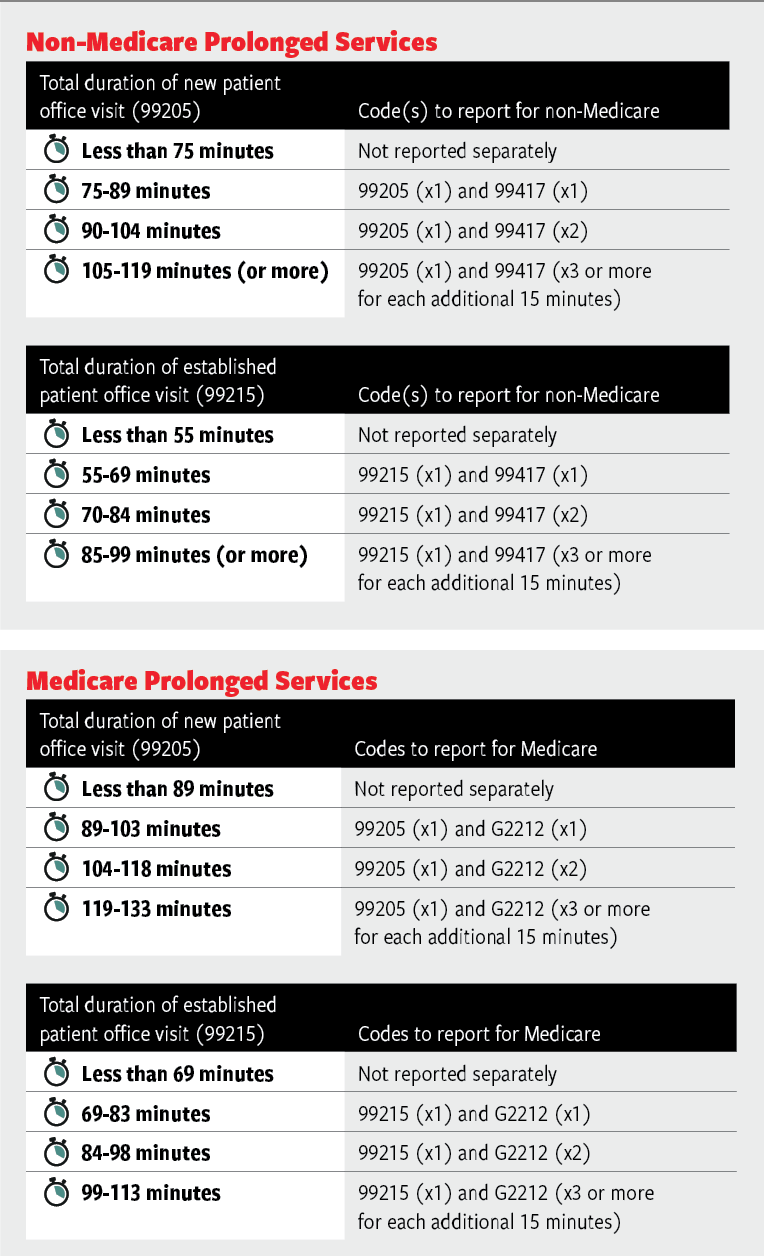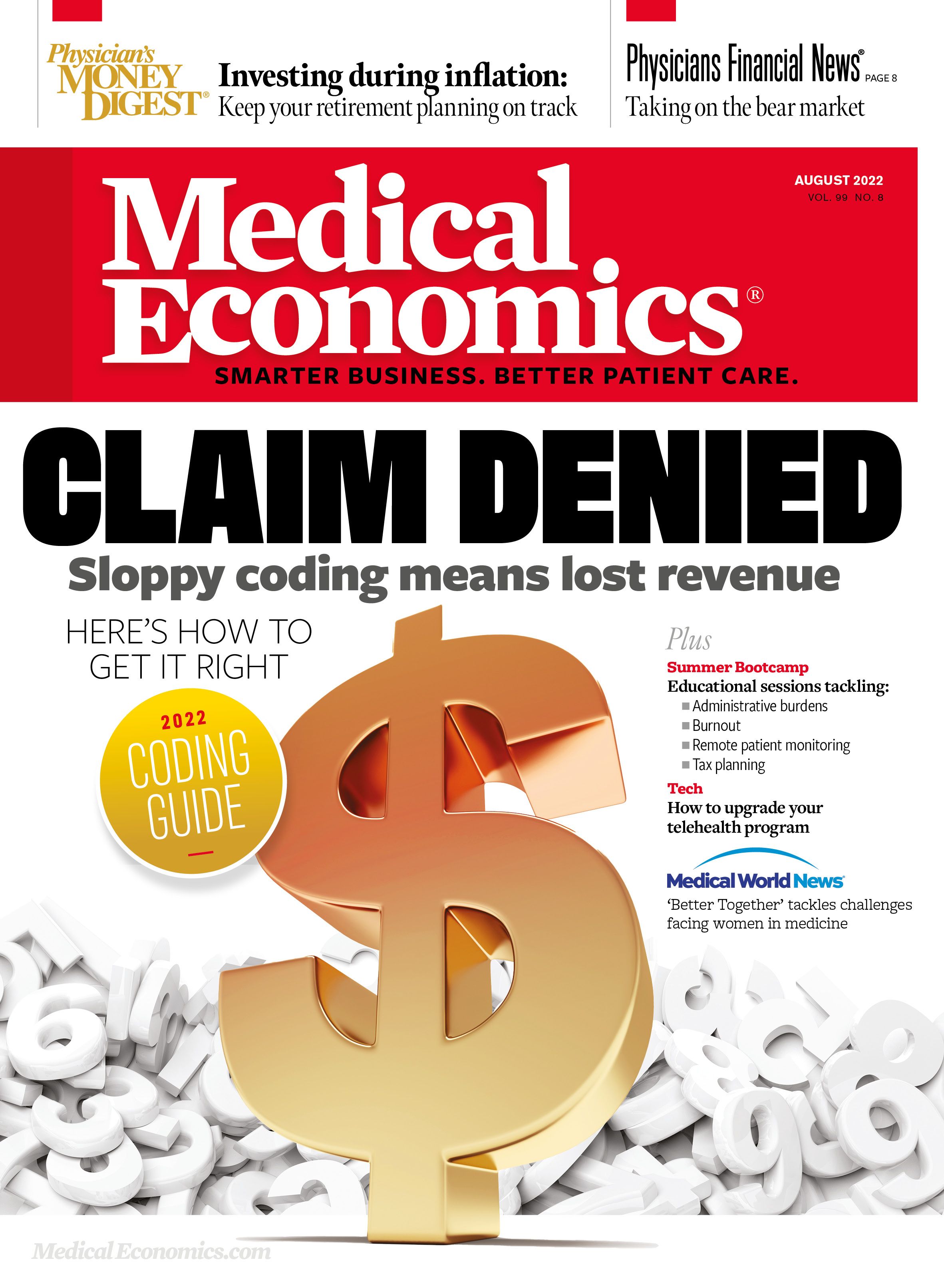Publication
Article
Medical Economics Journal
The 2022 Coding Guide
Author(s):
What you need to know to avoid claim denials and to maximize practice revenue
Despite your best efforts to follow billing guidelines, payers still deny your claims.
Or in some cases, they pay you and then take the money back. Experts say you can’t ever eliminate denials and post-payment recoupments entirely, but you can reduce them by focusing on coding and documentation compliance. Listed below are eight of the most common reasons for denials and how to avoid them.
1 Incorrect patient status (i.e., new versus established)
How to get paid: Don’t make assumptions. A patient who is new to you isn’t necessarily a new patient per official definitions. For example, did the patient have an audio-visual telehealth appointment within the past three years? If so, they’re considered an established patient even if they’ve never been seen in person, according to Victoria Moll, CPC, owner and founder of Contempo Coding, LLC, in Fleetwood, Pennsylvania.
Was the patient who was seen within three years by another physician in the same clinic? If so, they’re also an established patient, according to Toni Elhoms, CCS, CPC, chief executive officer of Alpha Coding Experts, LLC, in Orlando, Florida. “If taxonomy codes (aren’t) set up correctly, this will impact coding,” she says.
Be mindful of non-physician providers who see new patients and bill under their own nation provider identifier. If a physician sees those same patients within three years, the patients are considered established, Elhoms explains.
2 Incorrect application of prolonged services codes with office visit evaluation and management (E/M) codes
How to get paid: Know the rules. In the past, physicians could report a prolonged services E/M code in addition to any other E/M office visit code. However, in 2021, Medicare and current procedural terminology (CPT) rules and codes changed. What do you need to know? Consider the following:
Report the right codes. For Medicare, the prolonged services code is G2212. For non-Medicare, it’s 99417.
Know when to report prolonged services. Physicians can only report G2212 or 99417 with 99205 or 99215 when the physician selects the E/M code based on total time (not medical decision-making). Also be sure to append modifier -25 to the base E/M code.
Note minimum time thresholds for Medicare versus non-Medicare. See the chart below for more information.
Be sure to document the total face-to-face or non–face-to-face time spent with the patient on the date of the encounter, as well as why additional time beyond the usual service was required, Elhoms explains.
Check out the two guides on page 17 to help determine whether billing prolonged services may be warranted.
3 Invalid medical codes
How to get paid: Stay abreast of annual coding changes, says Kim Huey, MJ, CHC, CPC, CCS-P, PCS, CPCO, owner of KGG Coding and Reimbursement Consulting, LLC, in Alabaster, Alabama. “So many practices don’t keep up with the coding changes,” she says. “They file a claim on October 1, and the claim is denied because the code is invalid.”
What are some recently updated diagnoses? Consider the following:
Headache. Report R51.0 or R51.9.
Low back pain. Report M54.50, M54.51 or M54.59.
Cough. Report R05.1, R05.2, R05.3, R05.4, R05.8 or R05.9.
Similarly, physicians who don’t stay on top of coding changes also run the risk of reporting invalid procedure codes, Huey explains. She provides the example of G0297 for lung cancer screening; this code was deleted in 2021 and replaced by 71271. In addition, in 2022, Centers for Medicare & Medicaid Services (CMS) finalized the addition of proposed CPT code 99X21 as new CPT code 99437 (chronic care management services, each additional 30 minutes, by a physician or other qualified health care professional, per calendar month). CMS also adopted new guidelines for musculoskeletal procedures, including nonmanipulative care, and continues to publish new vaccine codes for COVID-19.
Another helpful pointer is to know when a singular combination code (rather than multiple diagnosis codes) is required, explains Sarah Ragan, CPC, certified coder in Daytona Beach, Florida. For example, when a patient has type 2 diabetes with chronic kidney disease, report E11.22. When a patient has hypertension with chronic kidney disease, report I12-. When a patient has heart failure with hypertension and chronic kidney disease, report I13-. Payers will deny claims when physicians don’t follow these coding rules, Ragan says.

4 Unspecified diagnosis codes
How to get paid: Avoid unspecified diagnosis codes when possible, as they are on most payers’ non-covered lists, Moll explains. She provides the example of a vitamin B12 shot for vitamin B12–deficiency anemia. If physicians report D50.9 (unspecified iron deficiency anemia) rather than D51- (vitamin B12–deficiency anemia), many payers will deny the claim.
5 Lack of medical necessity
How to get paid: It all comes down to specific payer policies for medical necessity, some of which may be stricter than the clinical criteria physicians use, says Tammy Tipton, owner of Appeal Solutions, Inc., in Oklahoma City. “These are the cases you (must) appeal to escalate to your provider rep,” she says. “You should also address these issues when you renegotiate your contract.”
However, payers may not negotiate in some cases, and patients need to understand they could be responsible for the bill, Huey explains. Consider a vitamin D deficiency screening. “Most payers won’t cover this test unless you have a history of a vitamin D deficiency,” she says. “What I see too many practices doing is coding it incorrectly — coding it as if the patient has the condition when we don’t know (whether) they do. This could be considered fraudulent coding.”
6 Coordination of benefits error
How to get paid: Leverage front desk staff, Tipton says. More specifically, educate them on verification of benefits, policy language, and precertification so they help avoid denials on the front end of the billing process.
Huey agrees. Well-educated front desk staff can sort out whether Medicare should be primary or secondary, for example. (Note: Medicare
provides a scenario-based guide to help practices identify cases where Medicare should be reported as secondary. To view this guide, scan the QR code below with your smart phone camera app.
Front desk staff can also help determine whether the reason for the visit pertains to an injury that worker’s compensation or auto insurance might cover as primary, Huey explains. When this is the case, they can collect information about the injury itself, including how, where and when (as well as the specific time of day — yes, some payers require it) the accident or injury happened. “They can also remind physicians to document all this information so you aren’t facing a potential denial,” she says.
7 High utilization of incident-to billing
How to get paid: Review your documentation to ensure it supports incident-to billing criteria, Elhoms says. To view this helpful resource from Medicare, scan the QR code below with your camera app.
“Payers know primary care physicians typically see around 20 patients a day,” Elhoms says. “If your practice has a utilization rate of 70 encounters per day, the payer will flag this and potentially start denying claims on a pre-payment basis.”
Where do physicians typically go wrong with incident-to billing? Elhoms identifies these common incident-to billing errors that could result in a denial:
Billing incident-to when the payer doesn’t permit it under any circumstances
Billing incident-to services for a new patient
Billing incident-to for an established patient when a change to the plan
of care occurs
Billing incident-to for an established patient when the supervising physician
is not present in the office suite and immediately available to provide assistance and direction
8 Billing for a related E/M service within seven days of a virtual service (i.e., a virtual check-in or e-visit).
How to get paid: Consider waiting seven days before billing a virtual service to ensure the practice doesn’t provide a related E/M service during that same time frame, Elhoms says. If the physician doesn’t provide a related E/M service within seven days of providing the virtual service, practices can bill the virtual service. If the physician does provide a related E/M service within seven days, practices can only bill one or the other — not both. Elhoms advises physicians to work with their practice management vendor to include built-in edits for virtual services codes to ensure proper billing.






